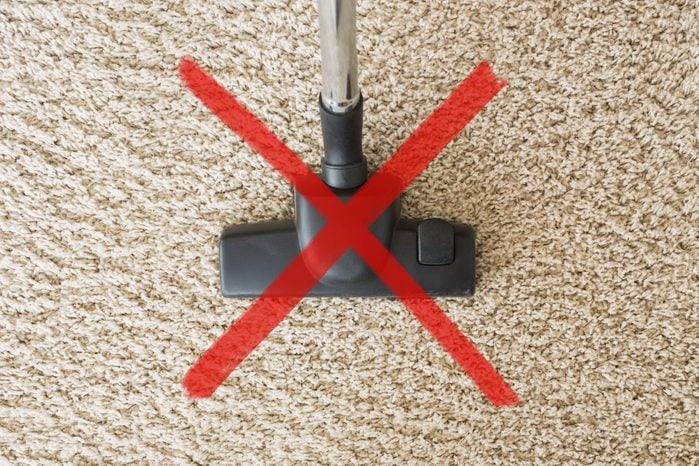
Let the cleaner fit the mess
Whether you’re clumsy in the kitchen or have the world’s fluffiest cat, there’s always something to clean. We all know that accidents happen, lint rollers are your best friend, and that when it comes to keeping your home spotless, your vacuum cleaner is one of the most useful tools in your closet. It’s definitely one of the best inventions ever, but there are some messes that even your vacuum can’t handle. These machines can be expensive, so you’ll definitely want to keep them in good working order. Vacuuming up the wrong thing could cause your vacuum cleaner to clog, rip its bag, or even suffer electrical failure, and leave you with even more chaos to clean up. So if you find yourself confronted with one of these messes, step away from the vacuum and reach for these other cleaning tools instead.
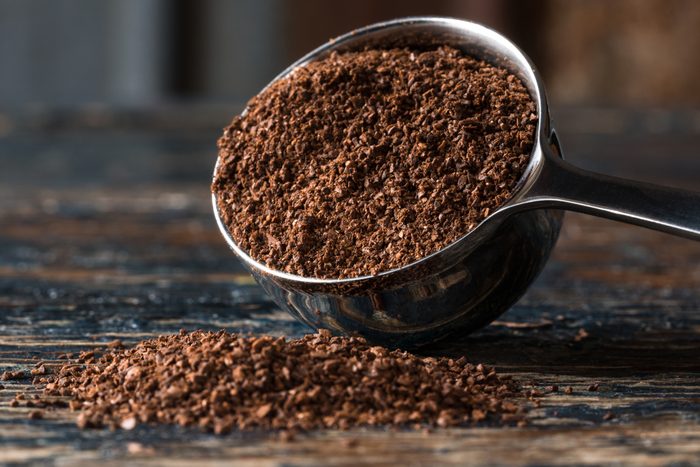
Used coffee grounds
All coffee drinkers know the struggles of cleaning out the ol’ coffee maker, unless you’ve given into the coffee-pods craze. Spilled wet coffee grounds are a pain to clean, but don’t make that a job for your vacuum. They can clog pipes, ruin the motor, and spur mildew growth inside the machine. If the grounds are dry, this is definitely a job for your trusty dustpan and brush; if wet, for a paper towel or washable microfiber cloth. Bonus: These are the best cheap vacuums that still tackle big messes and get the job done.
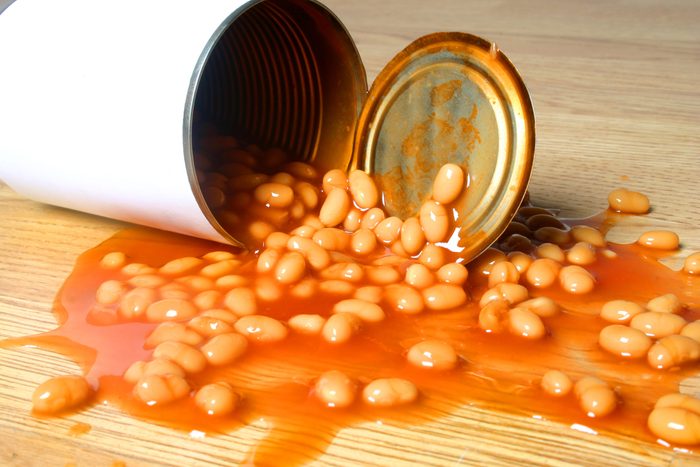
Wet foods
Some kitchen spills can be cleaned with a vacuum—dry ones, like sugar and salt. Others, like fresh produce, baked beans, and potato salad, cannot. They can clog the vacuum just based on their size and damage the motor because of their moisture. What’s worse, the foods could spoil inside your vacuum and start to smell. You don’t want to be stuck cleaning up that mess. Instead, pick up anything you can, and get anything liquid with a super-absorbent microfiber cloth. Here are 11 more ways you’re probably cleaning your kitchen wrong.
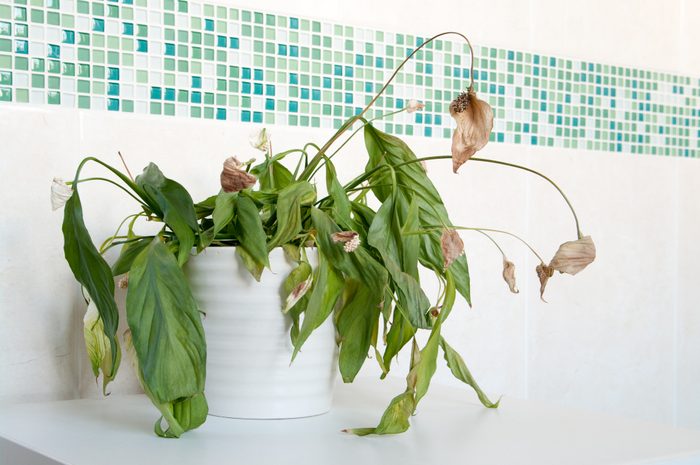
Plant debris
Dead leaves and flowers that fall off houseplants could easily clog your machine. Sweep or pick them up by hand instead. Are robotic vacuums really worth it? This is the definitive answer.

Fireplace ash
Sucking up fireplace ash with a vacuum is basically the opposite of cleaning because the particles are so fine that they could get blown out of the back of the machine and right into the air! To avoid looking like Bert the chimney sweep in Mary Poppins, sweep ashes up with a dustpan and brush. Good Housekeeping suggests covering them with wet coffee grounds before sweeping so that you don’t inhale any potentially harmful dust.
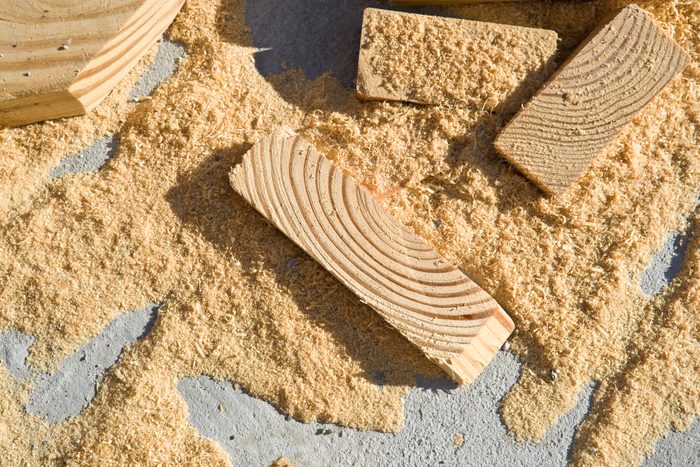
Construction dust
Home renovations are a big undertaking but don’t try to breeze through the cleanup with a vacuum. Like fireplace ash, construction debris is made up of fine particles that can burn out the motor or get released back into the air. Sweep it all up with a broom to keep your vacuum—and yourself—safe. Save money during renovations with these tips.
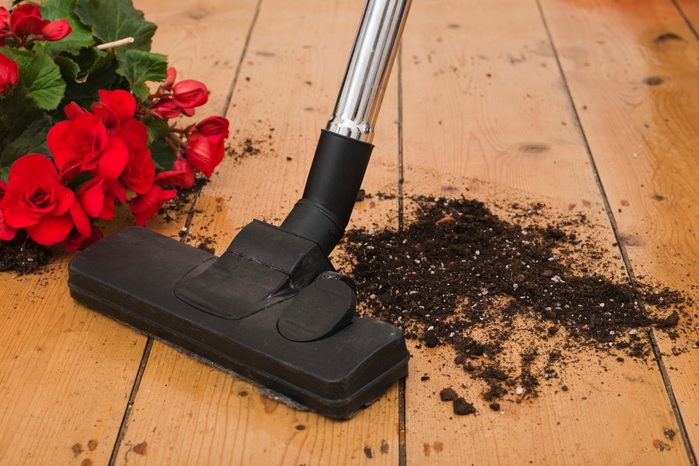
Soil
When your family’s shoes bring outside dirt and soil inside your clean home, you may be tempted to get out the vacuum. Bad idea. You could stain your carpet and cause the particles to get embedded even deeper into the material. Wet soil could also cause problems for the motor. Instead, pick up larger soil particles with a spoon, and allow wet soil to dry out overnight. Once it’s dry, you should be able to simply sweep it up. Looking for a vacuum that’ll do the work for you? Check out the best robot vacuums that have great customer reviews.
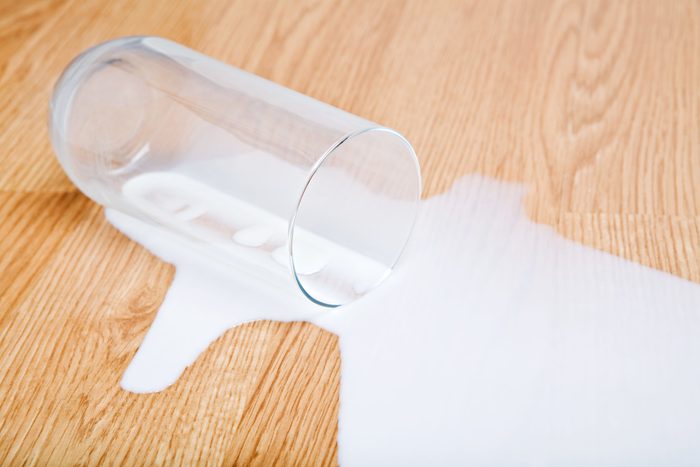
Liquids
Vacuuming up liquids is dangerous, plain and simple. You could be electrocuted. At the very least, the machine will undergo certain damage. Investing in a wet/dry vacuum designed to handle these problems is one solution, but there are plenty of other ways to clean spilled liquid: a mop, almost any Swiffer product, paper towels, regular towels, washcloths—you get the idea. Absorption, not suction! Or, try both with one of the best vacuum-mop combos on Amazon.
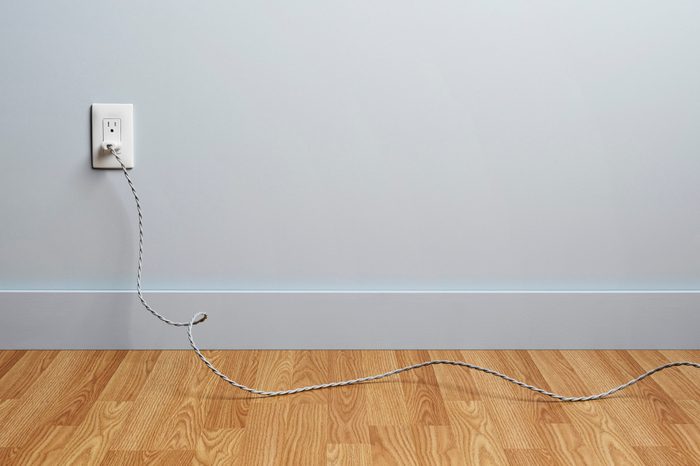
Electrical cords
It may not seem like a big deal to quickly vacuum over a cord so you can get that hard-to-reach corner, but it is. The vacuum can break apart the cord’s exterior and eventually expose the dangerous wires inside. Cords for vacuums themselves are usually more heavy-duty, but they can suffer the same damage. It’s a hassle to pick them up, but a brief moment of annoyance is better than having to replace shredded cords. Make sure you’re not doing these things that shorten the life of your vacuum cleaner.
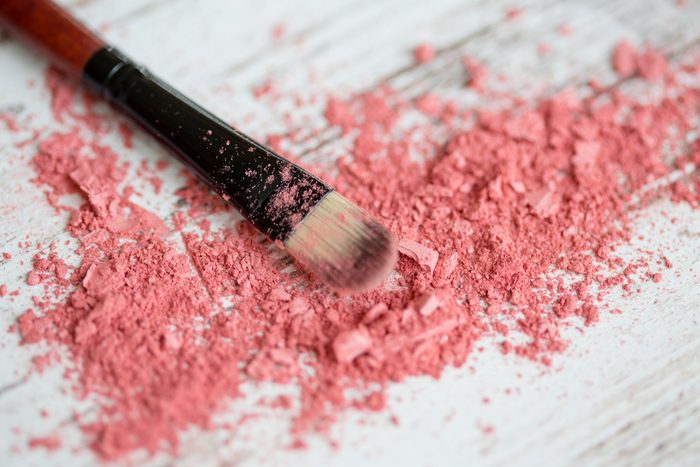
Makeup
Eyeshadow, bronzer, foundation, blush, even broken bits of lipstick—none of these things should ever go in your vacuum. They could melt inside the machine and cause serious damage. Not to mention, your vacuum brush could just grind them even further into your carpet or hardwood! Best to pick up as much as you can, and blot up the rest with a wet cloth or paper towel. On the bright side, now you get to shop for new makeup!
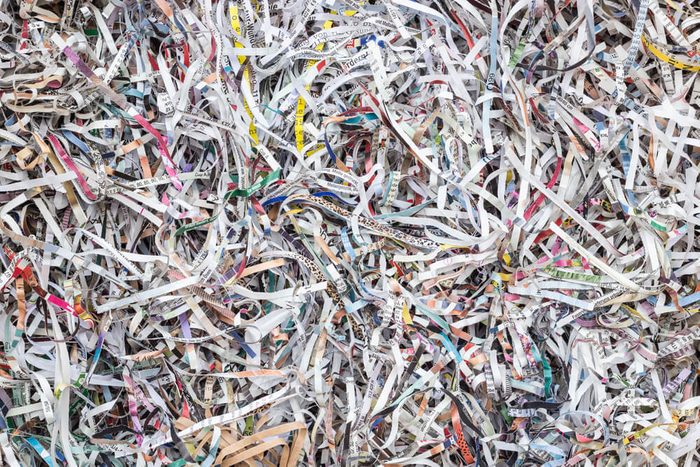
Shredded paper
Vacuuming up heaps of shredded paper is just as bad as heaps of hair, leading to a clogged machine and a screwed-up motor. A broom is the best solution to this mess, unless the shredded paper is on a carpet, in which case you may just need to use your hands. Remember to recycle!
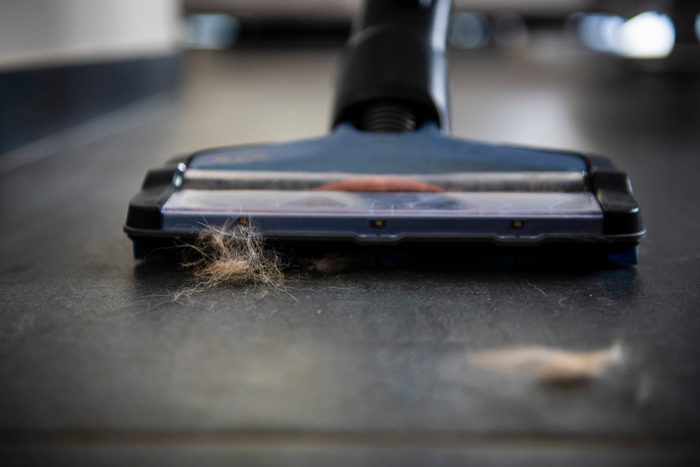
Clumps of hair
As someone with long, thick locks that shed constantly, I can honestly say vacuuming large amounts of hair just isn’t worth it. It clogs up the machine, and you’ll need to fish it all out just to make the vacuum work properly again. Gross. Save yourself time and extra effort by sweeping it up or, if it’s on a rug or carpet, just use your hands. Check out these 11 unexpected ways you never thought to use your vacuum cleaner.
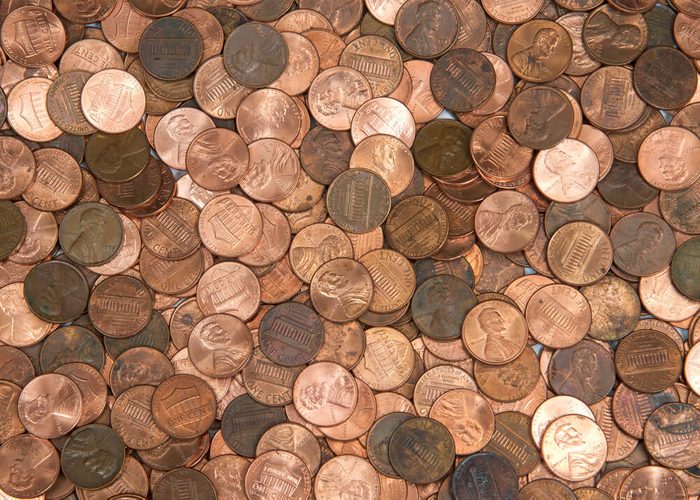
Coins and small toys
These are things you probably wouldn’t vacuum up on purpose. That’s why it’s extra important for you to check your floors before you hit that power button, especially if you have young kids or holes in your pockets. Small, heavy objects that get sucked up could break into pieces, cut the bag, wreck the vacuum’s motor, or all three. Pick them up as you go, and reward yourself for vacuuming with a treat purchased with all the money you discovered lying about the house.
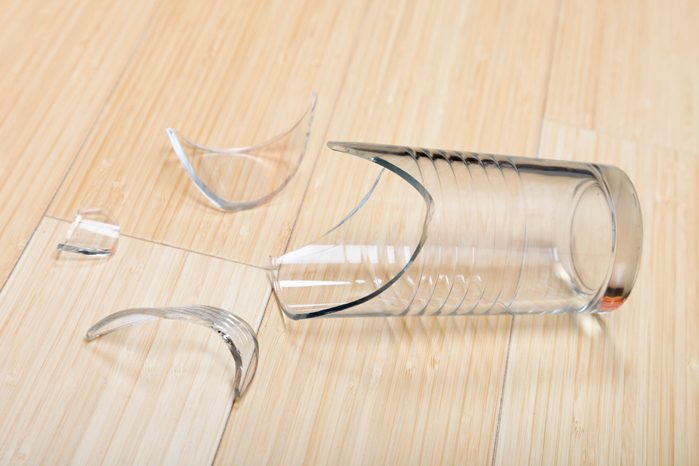
Large pieces of glass
Cleaning up broken glass is always a precarious situation, we get it. But copping out by doing the job with a vacuum can ruin the inside of your machine, or rip the bag (spreading the contents of it everywhere!) Then you won’t be able to vacuum anything. Throw away big pieces by hand (wear thick gloves if you’re afraid of getting cut) or just sweep it all up using a dustpan and brush. You can get smaller pieces by pressing a piece of bread over the shards—sounds strange, but it really works to pick up the tiny pieces! Next, find out the best vacuum cleaners to deal with cat and dog hair.
Sources:
- Good Housekeeping: “It’s Time To Say So Long To Soot!”